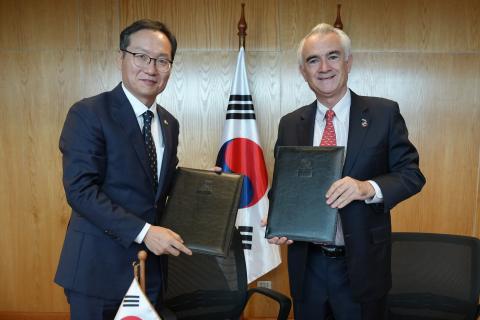Press Release
(20 October 2011) In 2010, crude oil and petroleum product imports in Central America reached 112.6 million barrels: 14.8 million barrels of crude oil and 97.8 million barrels of petroleum products.
The invoice for these imports rose to US$ 9.321 billion, a figure which represents 16.1% of the value for the exports of goods and services in the region, according to the report Central America: Hydrocarbon Statistics, 2010, released today by the Economic Commission for Latin America and the Caribbean (ECLAC) Subregional Headquarters in Mexico.
More than a third of hydrocarbons came from ports located in the United States of America. Venezuela's share notably fell, with its supplies representing 14% of the total volume imported. It was followed by Ecuador with a share of 6.1% and Colombia with 4%, while the remaining 41% related to imports from 30 countries.
The emergence of two Central American petroleum companies -the Honduran company, Terra, and the Panamanian company, Delta--, the strengthening of Alba Petróleos in El Salvador and Nicaragua and the fall in the share of the most important transnational companies are the most notorious events and trends in the Central American petroleum market.
Terra and Delta recently acquired the assets of the multinational company Shell. The former petroleum company has also made incursions into other energy subsectors: in August 2010 it inaugurated an important hydropower station in Guatemala.
In retail distribution, the region recorded 3,120 service stations in December 2010, a figure which shows a possible saturation in some countries. The number of stations has remained almost constant at national level, except for in Costa Rica and Nicaragua, where an increase was recorded.
In 2010, the average annual sales per station, in thousands of barrels per year, were 30.3 in Costa Rica, 21.3 in Panama, 18.3 in Honduras, 14.6 in El Salvador, 12.6 in Nicaragua, and 10.7 in Guatemala.
The ECLAC report is divided into five groups of statistical tables with up-to-date information for 2010 on the petroleum industry in Central American countries.
First, it outlines the price of hydrocarbon imports and the domestic prices of petroleum products. Then it presents oil and petroleum product balances, the figures for domestic consumption of petroleum products, the origin of imports and the storage capacity and the market structures, among other information.
Any queries should be addressed to the ECLAC Public Information and Web Services Section. E-mail: dpisantiago@cepal.org; Telephone: (56 2) 210 2040.



